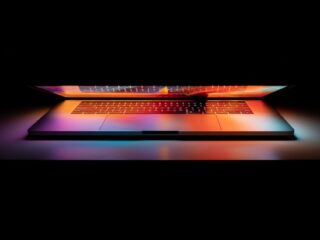
An operating system (OS) is a set of software programs that manage the hardware and software resources of a computer. The OS coordinates the activities of the computer’s various components and provides common services such as file management, memory management, and process management.
BACKGROUND
The first computers were large, expensive, and difficult to use. They were used primarily by scientists and mathematicians for tasks such as calculating rocket trajectories and designing atomic weapons. As the cost of computing power decreased and computers became more powerful, they began to be used for more general purpose applications such as businesses, government, and education.
- During the 1950s and 1960s, a number of different OSs were developed for mainframe computers. These OSs were designed to run a single large application, such as a payroll system or a reservation system. As the cost of computing power decreased and the capabilities of computers increased, it became possible to develop OSs that could run multiple applications simultaneously.
- During the 1970s, a number of different OSs were developed for minicomputers. These OSs were designed to run a number of small applications, such as accounting and inventory systems. As the cost of computing power decreased and the capabilities of computers increased, it became possible to develop OSs that could run multiple applications simultaneously.
- During the 1980s, a number of different OSs were developed for personal computers. These OSs were designed to run a large number of small applications, such as word processing and spreadsheet programs. As the cost of computing power decreased and the capabilities of computers increased, it became possible to develop OSs that could run multiple applications simultaneously.
- During the 1990s, a number of different OSs were developed for workstations and servers. These OSs were designed to run a large number of small applications, such as word processing and spreadsheet programs, as well as a few large applications, such as databases or e-commerce systems. As the cost of computing power decreased and the capabilities of computers increased, it became possible to develop OSs that could run multiple applications simultaneously.
Today, there are a number of different OSs available for personal computers, workstations, and servers. The most popular OSs are Windows, Linux, and macOS. Each of these OSs has a different set of features and capabilities.
DESCRIPTION OF THE OPERATING SYSTEM
The operating system is the most important program that runs on a computer. It is responsible for managing the computer’s resources, such as memory, processors, disk drives, and network connections. It also provides a platform upon which application programs can run.
The operating system allows the user to interact with the computer using a Graphical User Interface (GUI). The GUI provides a way
How much space does windows 10 take up
The current version of Windows 10 (as of October 2018) is around 4GB. However, the actual size will vary depending on the configuration of your computer. For example, if you have a lot of programs installed, the size will be larger. If you have a solid state drive, the size will be smaller.
Tags
apple microsoft argurmanbloomberg
look apple microsoft argurmanbloomberg
microsoft windows windowsfoleyzdnet














